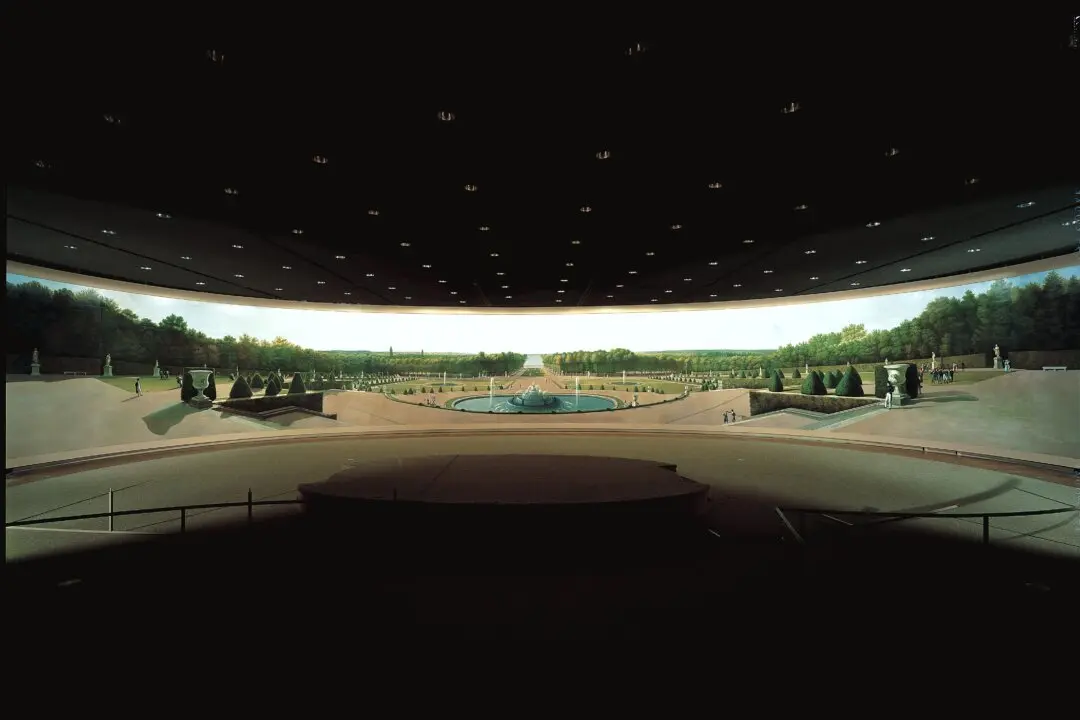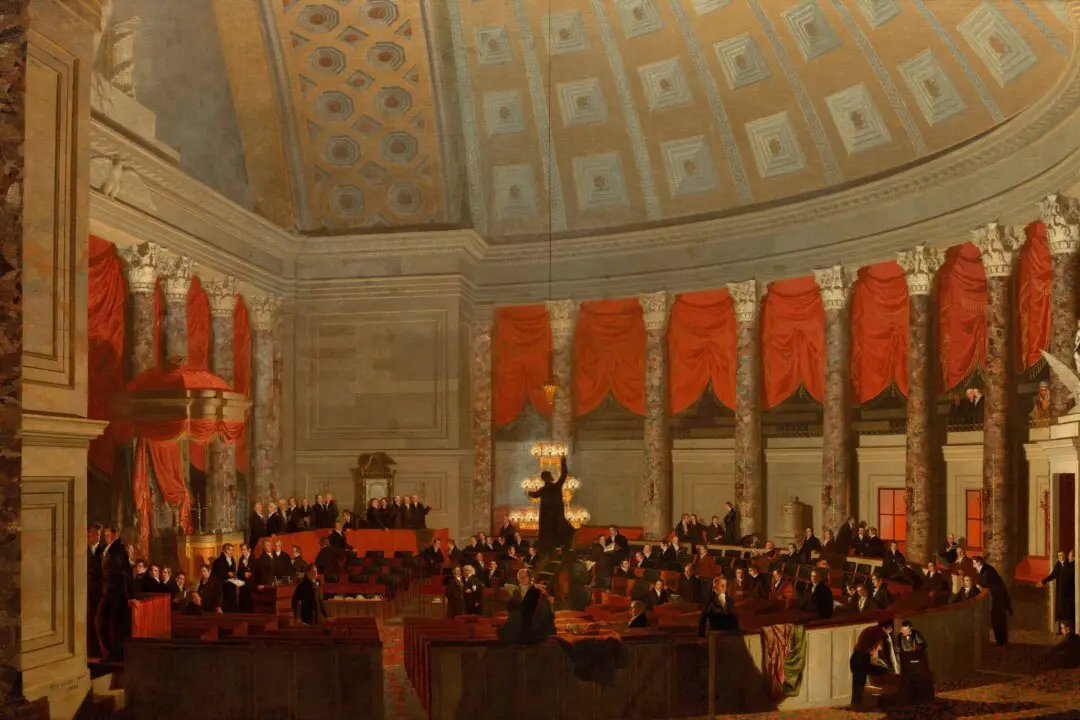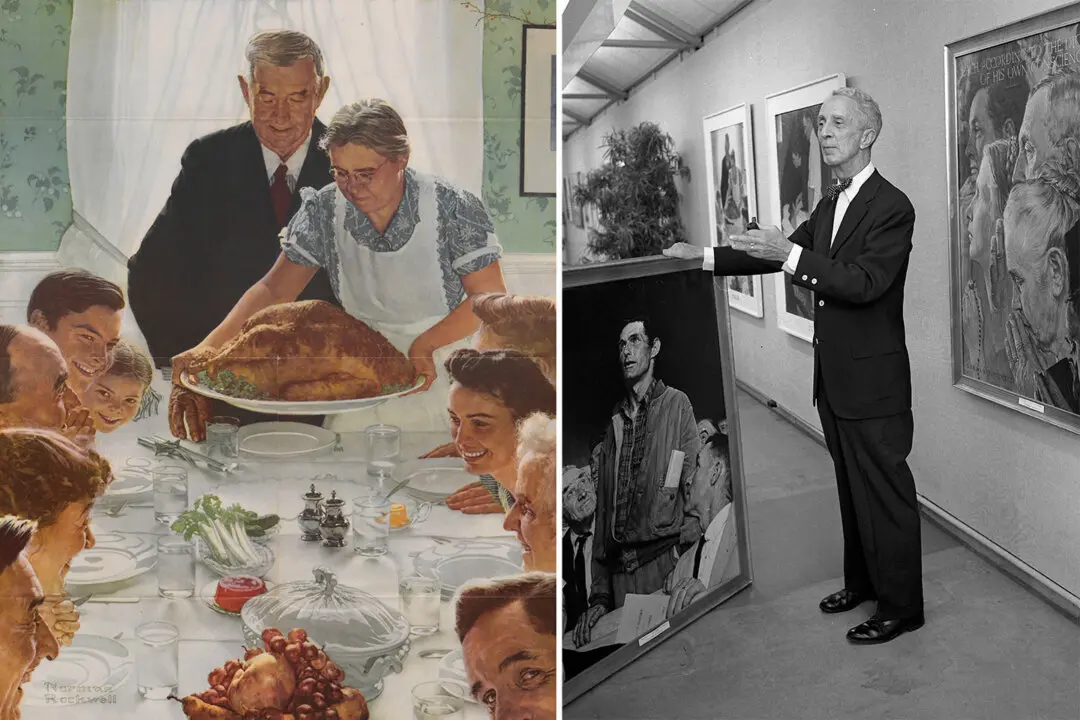The Metropolitan Museum of Art’s “Panoramic View of the Palace and Gardens of Versailles” by the American painter John Vanderlyn is a rare 19th-century surviving example of its kind. Panoramas—large-scale paintings of vistas in the round—were created for the entertainment of the public and patented in 1787. Their trompe l’oeil effects transported viewers.
Panoramas were hung in specially designed cylindrical spaces lit by hidden skylights. For a fee, visitors could survey the frameless 360-degree scene from an elevated central viewing platform. The public clamored for these immersive experiences, a phenomenon known as “panoramania.”





